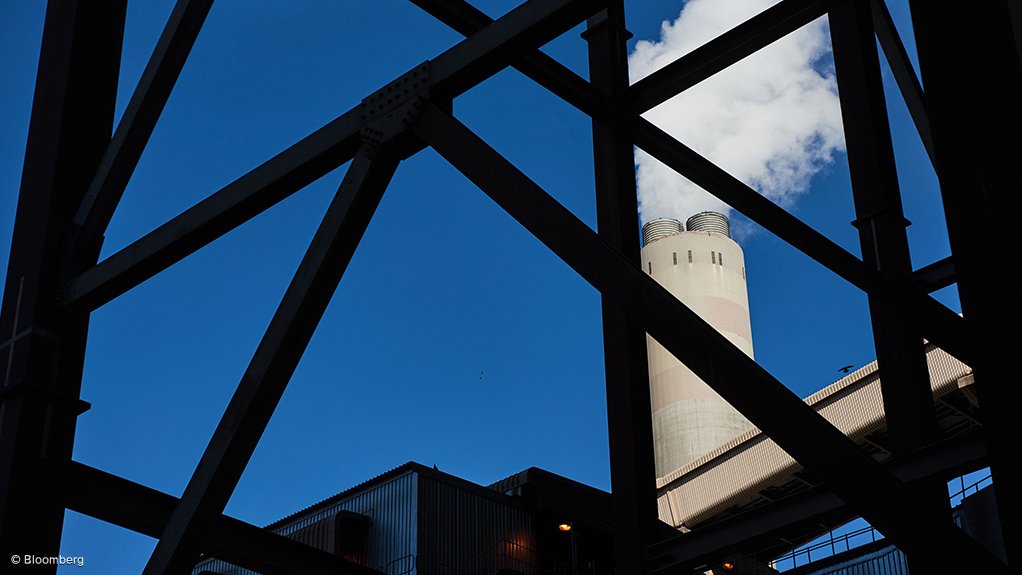Eskom says it is on track for permanent repair of Kusile stack by December
Eskom insists it is on track to complete the repairs to the ducts in the west stack at the Kusile power station by December 2024, ahead of the March 31, 2025, deadline set by the Department of Forestry, Fisheries and the Environment (DFFE) when it last year authorised the use of temporary stacks that bypass the key pollution control system.
The west stack was rendered inoperable when Kusile’s Unit 1 flue duct collapsed because of an uncontrolled build-up of slurry on October 23, 2022. The failure eliminated 2 100 MW of Kusile’s capacity from an already stretched system, as units 2 and 3’s flues, which share a stack or chimney with that of Unit 1, were also damaged by the collapse.
In addition, Unit 5’s commissioning had been delayed by a fire incident, while Unit 6 was still under construction, leaving Kusile with only one operational unit, Unit 4, for an extended period.
The incident intensified loadshedding by two stages and contributed to 2023 being the country’s worst-ever year for power disruptions, which were implemented almost daily and at times at Stage 6, which involves some 6 000 MW of rotational cuts.
The utility then proposed resuming production from the three units with the aid of temporary stacks that would bypass the flue gas desulphurisation (FGD) plant at Kusile, which was the first in the Eskom fleet to incorporate the sulphur dioxide (SO2) abatement technology.
On June 5, 2023, the DFFE’s National Air Quality Officer granted Eskom a postponement in terms of the Minimum Emission Standards in relation to Kusile’s SO2 emission levels and an updated Atmospheric Emission Licence was granted to the power station on June 13 to allow for the bypassing of the FGD plant.
The decision was made in the interest of ensuring that the capacity was returned to the loadshedding-prone grid a year earlier than would have been the case had Eskom implemented a permanent repair.
However, it was also heavily criticised by various community, agriculture and environmental groups, which warned of serious and costly consequences for human and animal health in the area.
In granting permission for the use of temporary stacks for 13 months, Forestry, Fisheries and the Environment Minister Barbara Creecy stipulated that Eskom must account to herself and Parliament’s Portfolio Committee on Forestry, Fisheries and the Environment on the progress of its repair to the west stack.
Eskom was also required to undertake measures to mitigate against the exposure of its employees and surrounding communities to harmful emissions, including through ongoing health screening.
In an update provided on March 5, Eskom reported that it had had several engagements with affected communities and made a commitment that these would continue until the permanent stacks were in place.
Eskom Group Executive for Generation Bheki Nxumalo also stated that emissions from the three units remained “below our atmospheric emission licence and ambient air quality limits”.
“We have implemented robust health screening initiatives within the surrounding areas and have installed additional ambient quality monitoring equipment to specifically monitor SO2 emissions,” Nxumalo added.
Emergency preparedness and response plans had also been developed, outlining processes and actions in the event of SO2 emissions exceedance incidents and for managing emergencies.
“Our onsite resources include a dedicated team of professional firefighters and emergency medical personnel, with a fleet of fully equipped ambulances and emergency response vehicles.
“We are also collaborating with the local authorities and several emergency scenarios have been mapped out and thoroughly prepared for.”
Article Enquiry
Email Article
Save Article
Feedback
To advertise email advertising@creamermedia.co.za or click here
Comments
Press Office
Announcements
What's On
Subscribe to improve your user experience...
Option 1 (equivalent of R125 a month):
Receive a weekly copy of Creamer Media's Engineering News & Mining Weekly magazine
(print copy for those in South Africa and e-magazine for those outside of South Africa)
Receive daily email newsletters
Access to full search results
Access archive of magazine back copies
Access to Projects in Progress
Access to ONE Research Report of your choice in PDF format
Option 2 (equivalent of R375 a month):
All benefits from Option 1
PLUS
Access to Creamer Media's Research Channel Africa for ALL Research Reports, in PDF format, on various industrial and mining sectors
including Electricity; Water; Energy Transition; Hydrogen; Roads, Rail and Ports; Coal; Gold; Platinum; Battery Metals; etc.
Already a subscriber?
Forgotten your password?
Receive weekly copy of Creamer Media's Engineering News & Mining Weekly magazine (print copy for those in South Africa and e-magazine for those outside of South Africa)
➕
Recieve daily email newsletters
➕
Access to full search results
➕
Access archive of magazine back copies
➕
Access to Projects in Progress
➕
Access to ONE Research Report of your choice in PDF format
RESEARCH CHANNEL AFRICA
R4500 (equivalent of R375 a month)
SUBSCRIBEAll benefits from Option 1
➕
Access to Creamer Media's Research Channel Africa for ALL Research Reports on various industrial and mining sectors, in PDF format, including on:
Electricity
➕
Water
➕
Energy Transition
➕
Hydrogen
➕
Roads, Rail and Ports
➕
Coal
➕
Gold
➕
Platinum
➕
Battery Metals
➕
etc.
Receive all benefits from Option 1 or Option 2 delivered to numerous people at your company
➕
Multiple User names and Passwords for simultaneous log-ins
➕
Intranet integration access to all in your organisation



















